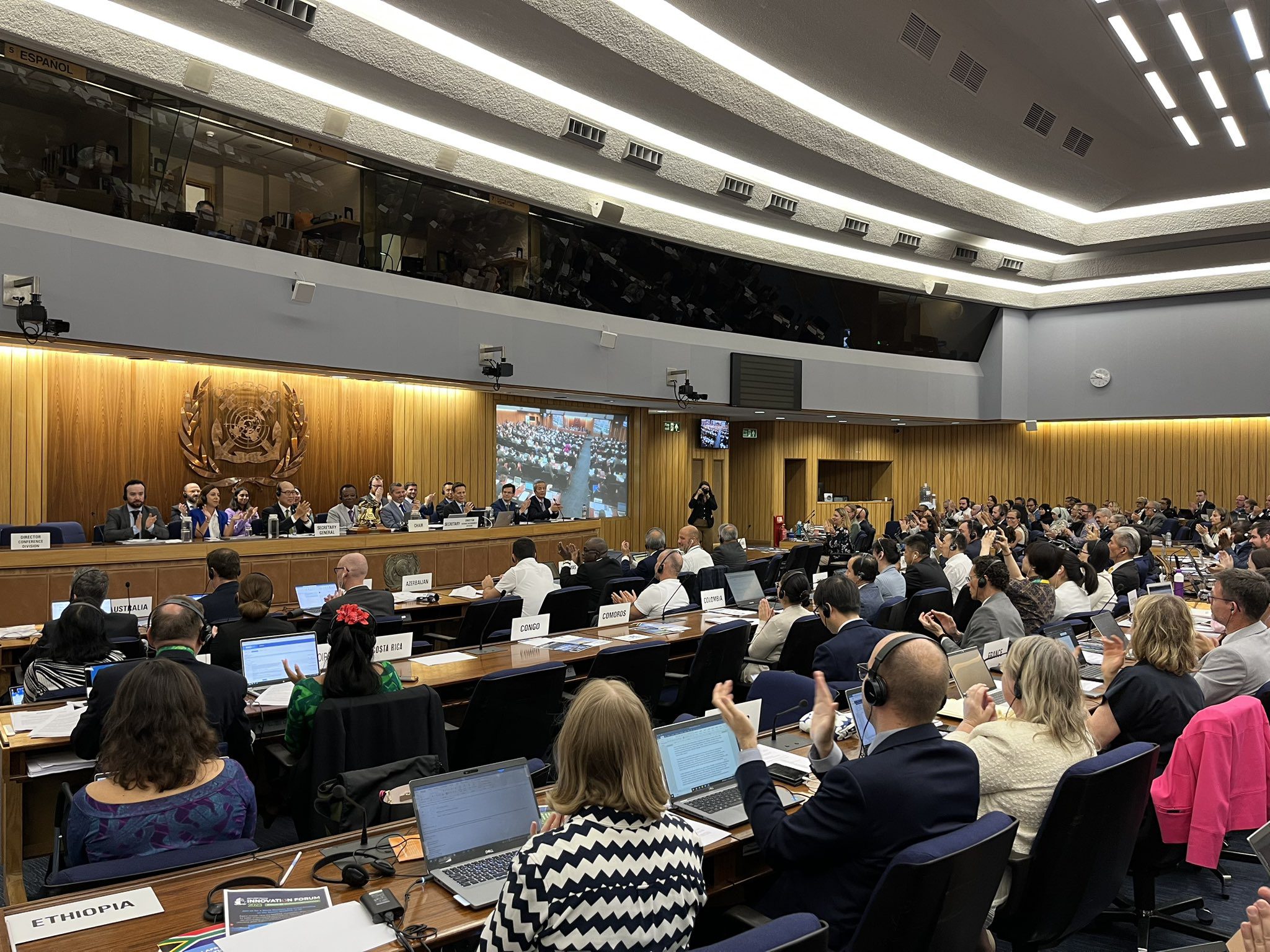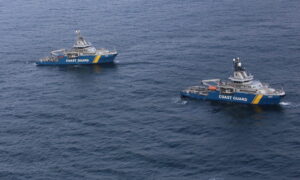The UN’s International Maritime Organization has agreed on a revised strategy to decarbonise the global shipping industry, a giant 1 billion tonnes a year emitter.
The agreement will be formally adopted on Friday, 7 July but no further changes are expected by delegates.
However, the revised strategy of IMO faces a lot of criticism by the shipping community as “it falls short” to provide the necessary clarity and strong commitments for a just and equitable Paris Agreement-aligned transition.
Countries agreed on “indicative checkpoints” of reducing emissions by at least 20%, striving for 30%, by 2030, and at least 70%, striving for 80%, by 2040, reaching net-zero “by or around, i.e., close to 2050”, qualified by whether “national circumstances allow”, as the clean shipping coalition reports.
There is a lot of criticism in the outcome of the IMO´s Marine Environment Protection Committee (MEPC) 80th session.
The Clean Shipping Coalition described the deal as a “wish and a prayer agreement”, with the language seemingly contrived to be “vague and non-committal”, mentioning that the level of ambition agreed is far short of what is needed to be sure of keeping global heating below 1.5C.
These targets are not strong enough to put shipping on a 1.5°C-aligned pathway set by the Paris Agreement, but experts say this target remains within reach if national governments and regions now step up with their own measures to enforce lower emissions faster.
The Pacific Island countries, supported by Canada, the US, the UK, fought hard for a 1.5°C- aligned action till the last moment, but were opposed by China, Brazil, Argentina and others. EU countries were seen as unreliable supporters of higher ambition, as NGO mentions.
A global carbon price, supported by over 70 developing and developed countries, has been moved forward as an “economic measure” under the IMO’s basket of measures, despite fierce opposition from China and others, falsely describing it as a developed country initiative, as it is also said.
John Maggs, President said about the outcome of agreement that “There is no excuse for this wish and a prayer agreement. They knew what the science required, and that a 50% cut in emissions by 2030 was both possible and affordable. Instead the level of ambition agreed is far short of what is needed to be sure of keeping global heating below 1.5C, and the language seemingly contrived to be vague and non-committal. The most vulnerable put up an admirable fight for high ambition and significantly improved the agreement but we are still a long way from the IMO treating the climate crisis with the urgency that it deserves and that the public demands.”
From his side Johannah Christensen, CEO of the Global Maritime Forum, said that it’s a remarkable improvement that the revised GHG strategy now aims to achieve net-zero emissions by or around 2050, and that the introduction of indicative 2030 and 2040 checkpoints for emissions reductions sends an important signal to governments and industry.
However, Mr. Christensen notes in the social media that the revised strategy falls short to provide the necessary clarity and strong commitments for a just and equitable Paris Agreement-aligned transition.
At the same time IMO´s Secretary-General Kitack Lim said after the adoption of the revised strategy that “it is not the end goal, it is in many ways a starting point for the work that needs to intensify even more over the years and decades ahead of us. However, with the Revised Strategy that you have now agreed on, we have a clear direction, a common vision, and ambitious targets to guide us to deliver what the world expects from us.”
Ambition: #GHG emissions from international shipping to reach net zero to peak GHG emissions from international shipping as soon as possible and to reach net-zero GHG emissions by or around, i.e. close to 2050, taking into account different national circumstances…
— IMO (@IMOHQ) July 7, 2023



